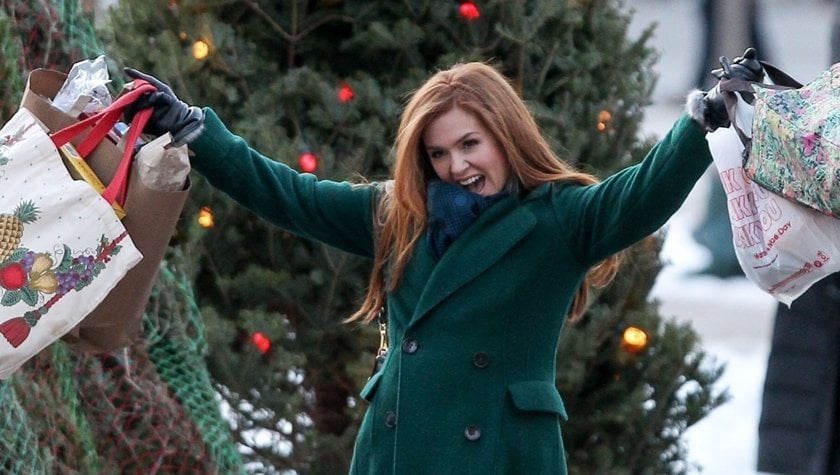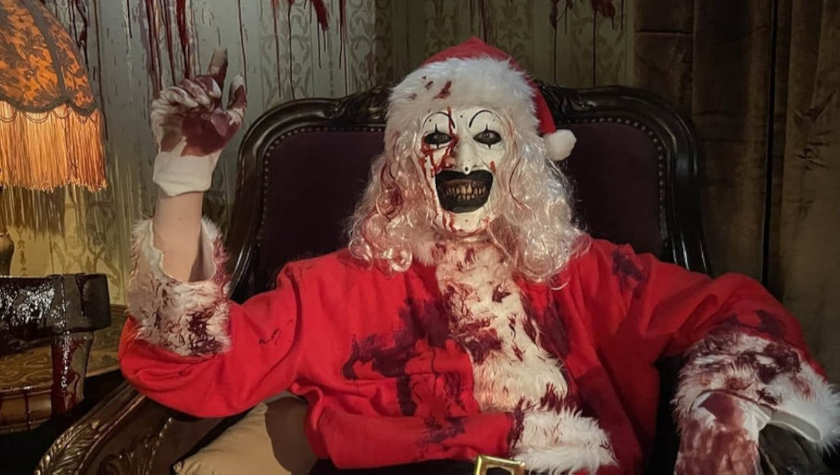What Exactly Counts As a Christmas Movie?
December 13, 2022
In recent years it’s become popular to cite Die Hard as “a Christmas movie.” There are several articles insisting that it is and outlining the various reasons: the primary being the film takes place during Christmas Eve and centers around an office Christmas party that gets crashed by terrorists.
The film takes place in Los Angeles, so it doesn’t have a wintry setting (a popular aspect of most Christmas movies). And, save for a few decorations in the building and a dark joke involving a Santa hat, there isn’t a pervasive Christmas aesthetic to the film.
However, it is Christmas Eve and the terrorists did crash a Christmas party. One could argue that the film has a pro family message, involving a separated husband and wife coming together on a fateful Christmas Eve, and that’s another check in the “Die Hard is a Christmas Movie” box. However, if you go on Wikipedia, it definitively states the genre as “Action Film” and this is how it’s officially categorized.
Why is this? Why isn’t Die Hard labeled a “Holiday Action Film”?
The argument against Die Hard being a Holiday or Christmas film is not only is there not a pervasive Christmas aesthetic, the fact that the story takes place during Christmas Eve is more of a plot device than an essential element of the film.
It could have just as easily been centered around a less seasonal office party; the fact that it’s Christmas Eve is utilized more as an ironic undercurrent than a strong plot element. Essentially, Die Hard would still be Die Hard even if it didn’t take place during Christmas Eve, and its primary function is to be a high-adrenaline action film.
Whereas films that are officially labeled as Christmas films center on the fact that it’s the Christmas season and it’s an inextricable element of the story (and many of them have the word “Christmas” in the title).
For example, A Christmas Story focuses on nine-years-old Ralphie Parker’s obsession with receiving a Red Ryder BB Gun for Christmas; it’s the primary plot-line of the film and its the protagonist’s main goal. It also has a pervasive seasonal aesthetic with a wintry environment, a visit to a department store Santa Claus, and a Christmas morning in which Ralphie discovers if he got the BB gun or not.
Other classic films that fall under this category are Christmas Vacation, Jingle All the Way, Four Christmases, and Christmas with the Cranks. All of these films are officially categorized as Christmas comedies and for obvious reasons: they all center around various aspects of the holiday and the fact that it’s Christmas time is essential to the plot. Home Alone and Home Alone 2: Lost in New York are also both categorized as Christmas comedies; even if they’re not as yuletide-focused as the above examples, there are enough seasonal elements to justify the label.
There are also several holiday family films that involve fabled characters connected to the season. The most universally known character in this regard is undoubtably Santa Claus. Santa Claus or Santa Claus related films are a popular subgenre of the Christmas genre, including Miracle on 34th street, The Santa Clause, Elf, and Fred Claus. So obviously, if Santa Claus is an actual character in the movie, it’s safe to call it a Christmas movie. And in some cases, as with the Christmas black comedy Bad Santa, the iconography of Santa Claus and his elves are utilized throughout the film. It might not be a family film, but Bad Santa is definitely a Christmas film.
But then we return to films that are little harder to categorized in which the Christmas season plays a role in the film, but it’s not an essential element of the overall plot. In addition to Die Hard, some films that fall into this category are The Apartment, Trading Places, Lethal Weapon, The Long Kiss Goodnight, Kiss Kiss Bang Bang, Iron Man 3, and The Nice Guys.
The last five films all being written by Shane Black, so it’s safe to say, he has a thing for Christmas. Interestingly enough, one of the films most associated with the holiday season, It’s a Wonderful Life, arguably belongs in this category.
Despite being a Christmas season staple and categorized as a “Christmas fantasy drama”, the majority of the film doesn’t take place during the Christmas season, and its plot doesn’t focus on the holiday. That being said, the film is narrated by angels and the third act not only takes place on Christmas Eve but takes a big cue from A Christmas Carol, and the most iconic moments are in this section of the film. Ultimately, It’s a Wonderful Life checks enough boxes for it to be justifiably labeled a Christmas movie.
Another debated film, which I think has greater claim to being a Christmas movie than Die Hard, is Gremlins. It’s categorized as a “black comedy horror film”, but I’d argue it’s a Christmas black comedy horror film. First off, the majority of the film takes place on Christmas Eve.
The town is covered with snow and Christmas decorations and there’s a pervasive holiday aesthetic throughout. The film’s opening credit sequence revolves around various seasonal sights as Darlene Love’s “Christmas (Baby Please Come Home)” blares joyfully. Gizmo is a Christmas gift from Rand Peltzer to his son Billy, so when Gremlins spawn from the mogwai, it can be viewed as a Christmas present gone wrong storyline.
There’s even a Santa Claus story — albeit the most macabre and horrific Santa Claus story ever imaginable —which proves that in addition to a decapitated snowman, a Scrooge-like elderly character, plenty of snow and Christmas decorations, the Darlene Love tune, the majority of the film taking place on Christmas Eve, and a main storyline involving a Christmas present gone wrong… well, it doesn’t seem like such a stretch to label Gremlins a Christmas movie. And if a green creature called the Grinch can join the ranks of fabled characters associated with Christmas, why not “the little green men” of Gremlins? Like Stripe and his cohorts, didn’t the Grinch wreak havoc on the holidays? I’d even argue that Gizmo saving the day via a Barbie car is kind of Christmassy. Finally, the last scene of the film in which the Peltzer family watch as Billy’s Christmas present is taken away by a wise old man into a snow-covered night is as Christmas movie as Christmas movies get!
Yes, Gremlins is a dark film, but darkness isn’t antithetical to Christmas films. As mentioned, Bad Santa is a Christmas black comedy, and any film based on Charles Dickens’ A Christmas Carol — and there have been many — is inherently dark with its grim protagonist and foreboding ghosts (the Ghost of Christmas Future often being depicted as a deathly Grim Reaper figure). Perhaps the darkest retelling of A Christmas Carol is Scrooged (starring an especially acerbic Bill Murray) and it’s labeled a “Christmas fantasy comedy”. Similarly, It’s a Wonderful Life is exceedingly dark in its third act with its Twilight Zone-esque plot turn and nightmarish atmosphere. So if Scrooged and It’s a Wonderful Life can be dark and scary at times and still be categorized as Christmas movies, then why not Gremlins as well?
Ultimately, what’s a Christmas movie is what you decide is a Christmas movie.
Whether it features Santa Claus, John McClain, or Gizmo.
Written by: Edwin Cannistraci
Edwin Cannistraci is a professional screenwriter. His comedy specs PIERRE PIERRE and O’GUNN both sold with more than one A-list actor and director attached. In addition, he’s successfully pitched feature scripts, TV pilots and has landed various assignment jobs for Universal, Warner Bros, Paramount and Disney.- Topics:
- Screenwriting & Craft




